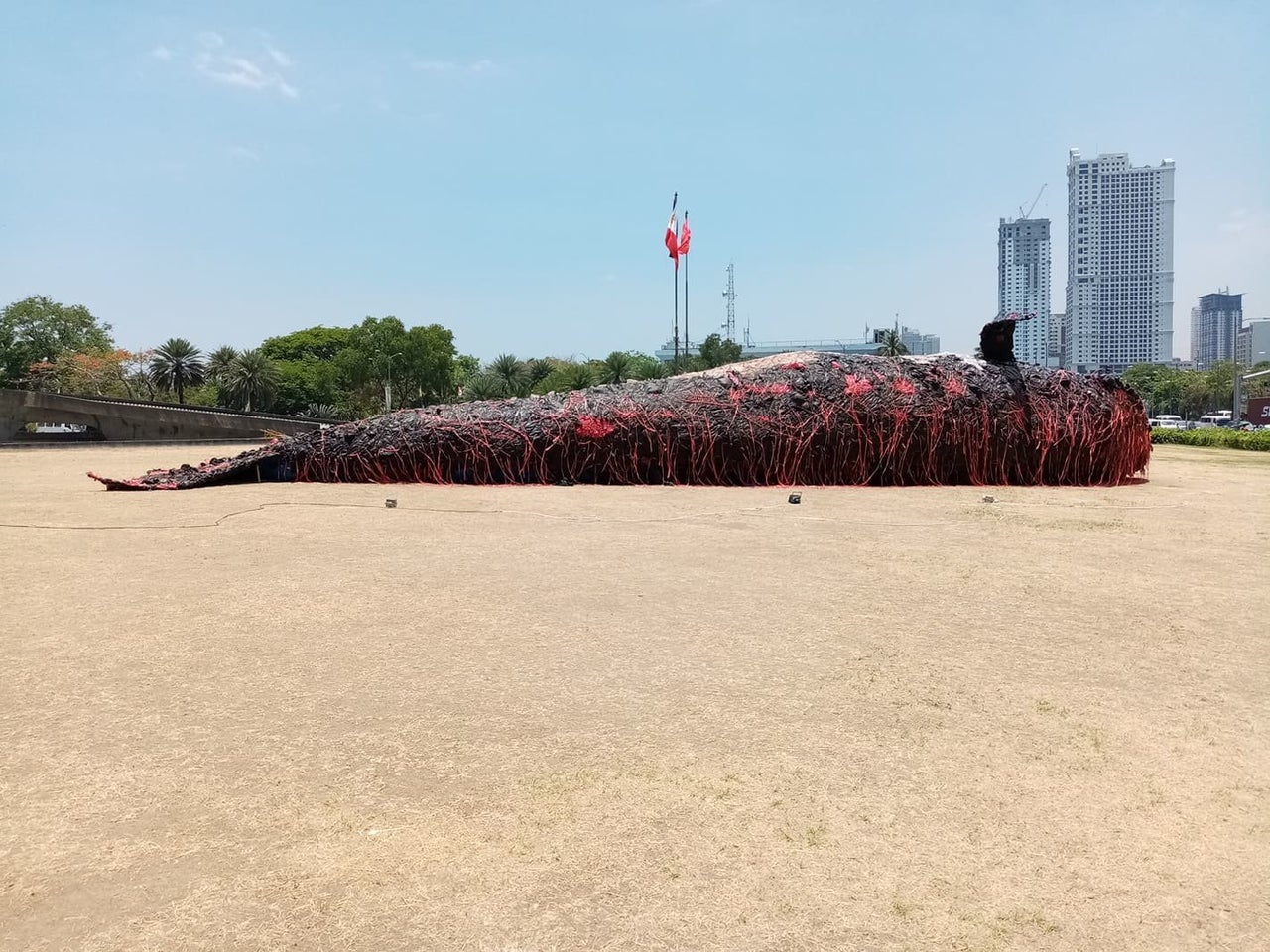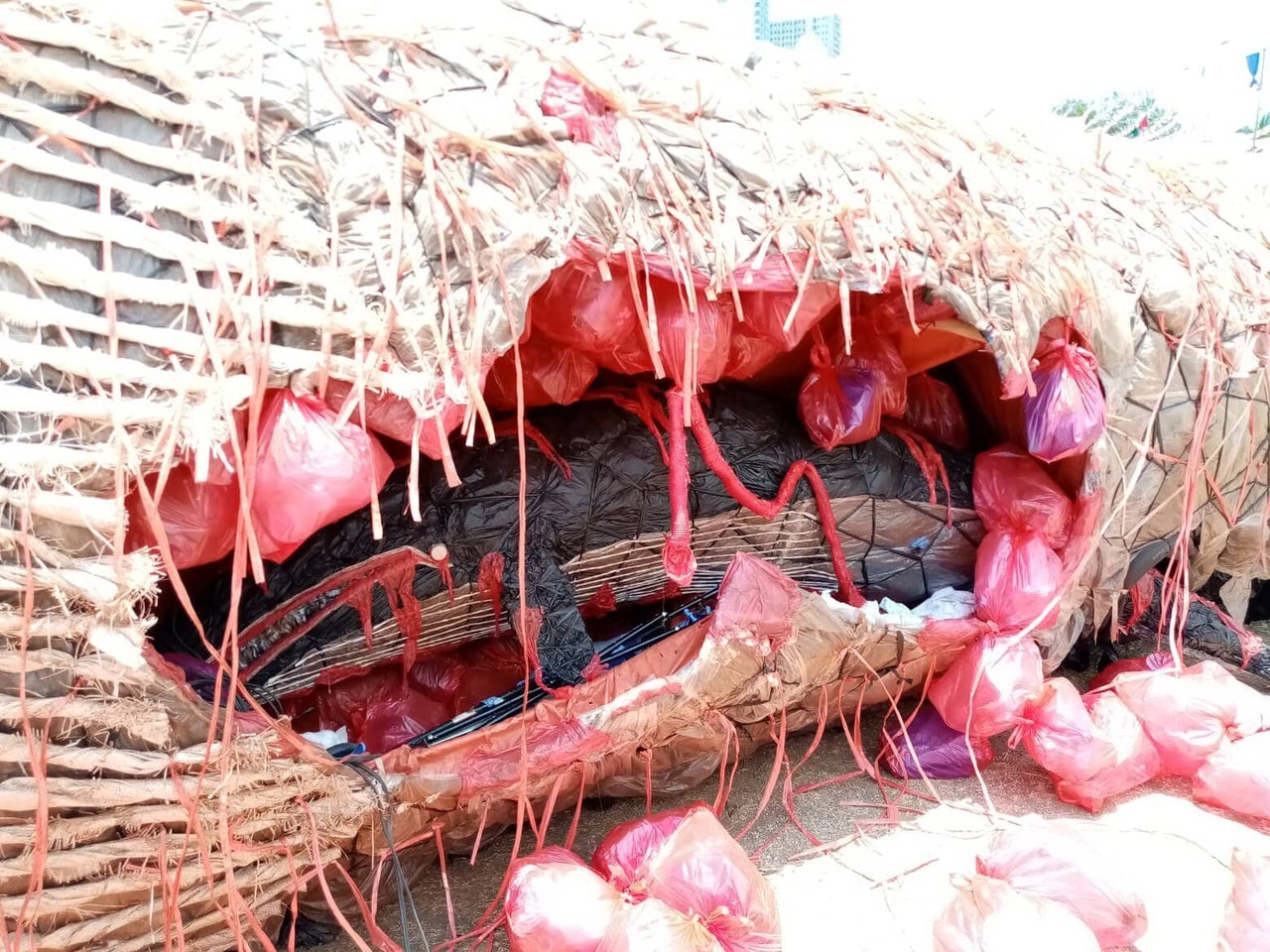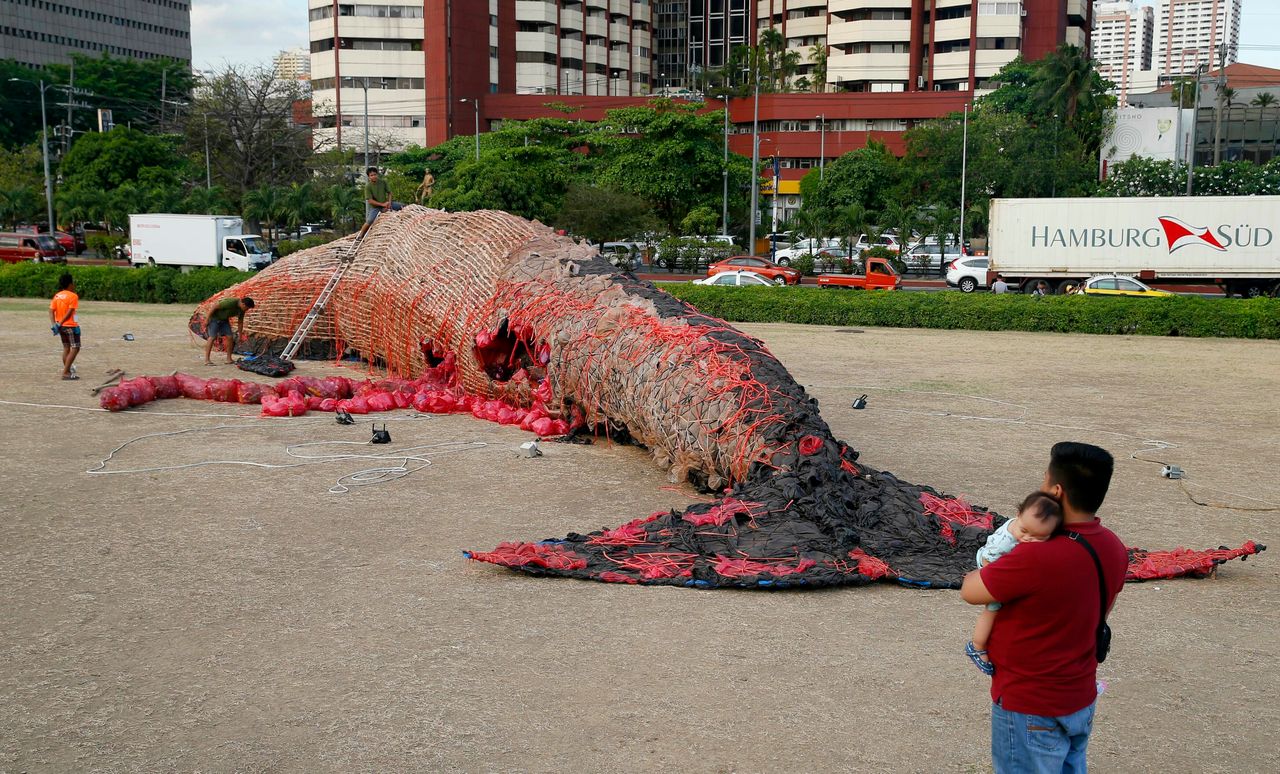The amount of plastic trash in the oceans is increasing, and it’s taking a grisly toll on marine animals. Whales, for instance, have died from ingesting floating plastic debris that they mistook for food.
To call attention to the issue, an artist in the Philippines last week unveiled a gigantic outdoor installation that looks eerily like a dead whale, its plastic-clogged intestines spilling onto the ground.
Artist Biboy Royong designed the piece, called “The Cry of the Dead Whale,” to be displayed outside the Cultural Center of the Philippines in Manila Bay. The whale is made out of garbage, including plastic bottles, straws and bags found strewn on the shoreline. At 78 feet long, it’s meant to look like a real whale from afar.

Royong displayed a similar piece in Naic, Cavite, in 2017. His current design features a baby whale nestled inside a larger one, and is available for viewing in Manila through May 26.
An estimated 100,000 marine mammals die from plastic pollution every year, according to the World Wide Fund for Nature.
In March, the carcass of a 15-foot, 1,100-pound whale washed onto a beach in Compostela Valley in the Philippines. The mammal had ingested 88 pounds of plastic, which experts say led to starvation, dehydration and its ultimate demise.
Only a few days later, a pregnant whale was found dead off the coast of Sardinia, Italy. It had 49 pounds of plastic in its belly.

The Philippines is one of the largest ocean polluters in the world, according to a 2015 report published in the journal Science. In April 2018, a San Beda University student captured video footage of waves of garbage in Manila Bay during a volunteer cleanup.
Unfortunately, countries like the Philippines often take the blame for garbage found in their waters, even though that debris is mostly produced in North America and Europe, according to Greenpeace.
A March report from the Global Alliance for Incinerator Alternatives revealed that Nestlé and Unilever were the primary sources of plastic pollution in waste audits performed in the Philippines.
Foreign countries also ship their waste to developing nations like the Philippines to be processed and disposed of. Just last week, Philippines President Rodrigo Duterte threatened to wage war against Canada over a yearslong dispute about the trash that the North American country sends to the Philippines’ ports.

This story is part of a series on plastic waste, funded by SC Johnson. All content is editorially independent, with no influence or input from the company.
